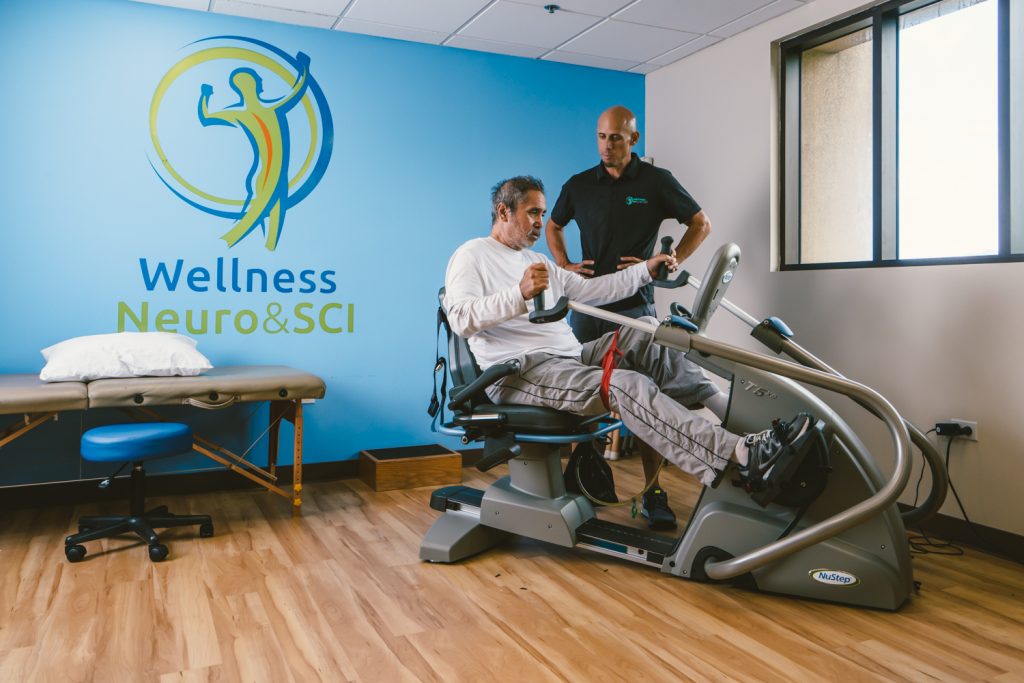Fitness is our passion. Whether you suffer from deconditioning, balance problems, weight problems, or anything that affects mobility, we offer a holistic approach to improve strength, balance, and endurance—and most importantly, improve confidence and independence. Our customized exercise plans are guided by experts within a safe environment.
Wellness and Fitness

Call now for more info or for a free consultation.
The importance of cardio fitness and why HIT can’t take its place
As our world becomes increasingly busy and fast-paced, we’ve seen widespread growth in the popularity of high-intensity interval training (HIT). These short, high-intensity interval workouts are convenient for people who don’t have the time or patience to put in long hours with traditional endurance training sessions. And they have certainly been shown to provide some benefits, even for elite-level athletes with established cardio bases. They can help build bulk and fast-twitch muscles, and increase top-end speed. But contrary to popular belief, these anaerobic, HIT workouts don’t provide the same benefits as cardio workouts. The fact is, there is simply no replacement for extended periods of cardio exercise, whether you are an elite athlete or a weekend warrior. Sadly, while HIT exercises might help us look fit, they don’t provide many of the important health benefits and base fitness that hours of cardio work do.
The same holds true for those who are rehabbing from debilitating injuries. Those who have suffered spinal cord injuries or are dealing with stroke rehabilitation are often encouraged to do strength training and even HIT workouts, but they are rarely prescribed cardio exercise. This puts them at an enormous disadvantage, since good cardio health is actually instrumental in the healing process.
Spinal cord damage can lead to paraplegia and quadriplegia, both of which might result in the need for a wheelchair. Likewise, stroke survivors often find themselves forced to remain sedentary for long periods of time as they recover, and this inactivity can diminish their cardio fitness. But a strong cardio base can speed up the healing process in a number of different ways. For example, dilating the blood vessels for long periods of time encourages good circulation, which results in more blood, oxygen, and nutrients reaching and helping to repair damaged cells. Meanwhile, regular movement and weight-bearing helps maintain body mechanics and bone density, even if the patient is paralyzed or requires braces for ambulation.
An analysis of 19 studies established a link between regular aerobic training and stroke patient recovery, as well as increased endurance and walking capacity. Mixed aerobic activity had the greatest effect, followed by walking, stationary cycling, and recumbent stepping. Of course, this type of activity can be challenging and frustrating for many patients dealing with paralysis or the aftermath of strokes, and requires patience and encouragement from everyone involved. The proper equipment can also help facilitate cardio training, such as the NuStep Trainer, arm bikes, regular stationary bikes, and a SkiErg. With the help of these tools and an experienced therapist who prioritizes cardio rehab, the many health and healing benefits of a regular cardio training program are easily attainable.
Whether you are seeking full recovery after a stroke or spinal cord injury, a family member of a patient who is looking to maximize their own health, or an elite athlete looking for improved endurance and strength, we highly recommend a training regimen that emphasizes functional movement and aerobic fitness. HIT workouts might be en vogue at the moment, but there’s no replacement for good, old-fashioned cardio.
